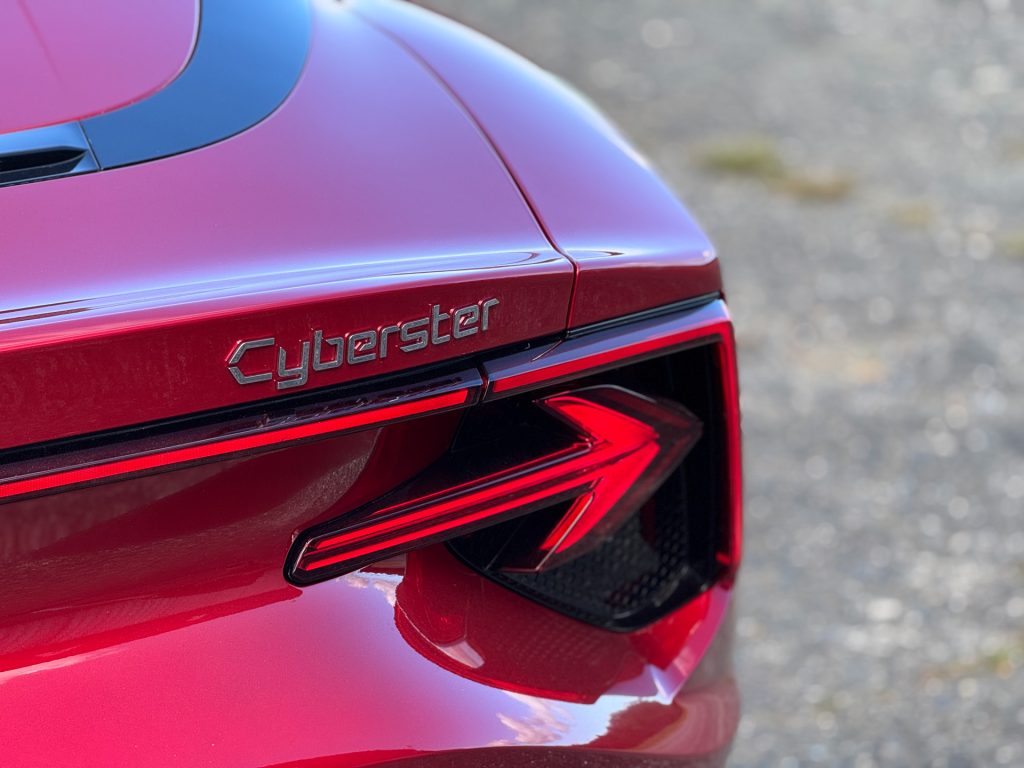MG Cyberster First Drive with video
MG Motor New Zealand has finally landed the Cyberster all-electric convertible two-seater. For now, it seems there’s only one available, and with such scarcity, just a few select media were given the opportunity to take it for a few hours’ drive.
The Cyberster is a good enough reason to throw away your Sunday afternoon plans. If we overlook the original, very bespoke Tesla Roadster, this is the first electric two-seater convertible to be mass-produced. It also represents a huge leap forward for the MG brand, more than doubling the price of its next most expensive model, with a hefty $129,900 tag.
For those expecting an electric successor to the classic MGB, or perhaps something in the vein of the Mazda MX-5, the price should serve as a hint: this car is not playing in the same league. At 4535mm long and 1913mm wide, it’s closer to a Corvette in size. We thought it might compare to a Porsche Boxster, but the tape measure suggests it’s even bigger than a 911.
However, it doesn’t look big. This is likely due to its well-balanced design, with neither the nose nor tail appearing overly long. The 20-inch wheels certainly help too, staggered with 245-width tyres at the front and 275s at the rear, wrapped in sporty Pirelli rubber.
The design feels far more organic in person too. You might even find yourself questioning the badge; its striking presence could easily pass for a Jaguar.


A closer look at the design
Highlights include functional aero venting around the front wheels, active shutters in the front grille, LED headlights, and power bulges on the bonnet—though there’s no frunk underneath.
While the car’s styling is impressive, it’s the doors that will likely capture the most attention. With the push of a button, the scissor doors spring open—a feature that has been the dream of every car enthusiast since childhood. MG has added a practical touch too: sensors that prevent the doors from hitting nearby cars or obstacles in tight parking spaces.
At the rear, the design almost feels like a speedtail, enhanced by a black diffuser-style trim. The arrow-like taillights are meant to evoke the Union Jack, a nod to the car’s British roots, despite its Chinese manufacturing. The “Cyberster” badge, however, feels a little too digital for what is otherwise a classic design exercise.
The boot offers a respectable 250 litres of space. You might struggle to fit a large suitcase, but it’s perfect for a couple of carry-on bags for a weekend getaway. There’s also a small storage area behind the seats for extras.
Our test car featured a black roof with diamond red metallic paint, but we expect that a contrasting red roof will be an option, along with other choices from the five-colour palette. Interior options include red or the cream and grey combination we had in our test model.
Inside the cabin
Getting in is relatively easy, thanks to the wide aperture provided by the scissor doors. The seats are a mix of Alcantara and synthetic leather, though in this light colour, we noticed some wear—particularly on the passenger seat and centre console grab handle. The seats sit slightly high in the base, but overall, they’re comfortable if not particularly supportive for a sports car. MG has packed the Cyberster with tech, but four screens may be overkill. Beyond the digital dashboard, there’s a screen for the trip computer and reversing camera, another for infotainment (Apple CarPlay and Android Auto are standard), and one more for managing various vehicle settings. While these add to the car’s futuristic feel, some might find them distracting. The glossy surfaces also attract fingerprints, which detract from the otherwise premium interior.
The steering wheel, by contrast, is a much better experience—chunky and well-sized, with paddles for regenerative braking, buttons for driving modes, and an enticing red button for “Super Sport” mode. The control sticks for infotainment are functional, though not groundbreaking.
Performance and charging
The Cyberster comes equipped with a CCS Type 2 charging port, supporting 11kW AC and 144kW DC charging. This feeds into a 77kWh NMC battery, providing a range of approximately 440km under WLTP standards. Real-world figures are likely closer to 380–400km, but either way, the Cyberster gives you ample range for weekend trips without frequent charging stops. Charging from 20 to 80 per cent takes around 25–30 minutes, which is quite reasonable for a car in this segment.
When it comes to performance, the Cyberster is blisteringly quick, with 375kW of power and 750Nm of torque. The “Super Sport” button unlocks the car’s full potential. Though it shares a platform with the MG4 XPower, the Cyberster feels more refined, with better chassis control and smoother power delivery.
That said, this isn’t a razor-sharp sports car in the traditional sense. While it excels in straight-line speed, it behaves more like a grand tourer in the corners—stable and comfortable, but without the crisp feedback you’d expect from something like a Porsche Boxster or a Mazda MX-5. For most drivers, this softer, more refined setup will be ideal, allowing for everyday usability rather than weekend-only thrills.
Technology and safety
The Cyberster comes with a full suite of driver assistance and safety technologies, including lane-keeping assist, adaptive cruise control, and a driver monitoring system. Unfortunately, our short test drive didn’t give us enough time to fully assess these features.
Despite the car’s significant weight (nearly two tons), the Brembo brakes provide strong stopping power without the wooden feel that often plagues regenerative braking systems. You also get three levels of regenerative braking, an Auto mode, and a one-pedal driving option.
Verdict
The MG Cyberster is a surprisingly mature and well-rounded product. At $129,000, it offers excellent value for money, delivering the kind of performance you’d expect from cars priced well above $180,000. The only lingering question is whether buyers will see the MG badge as special enough to justify the investment.














